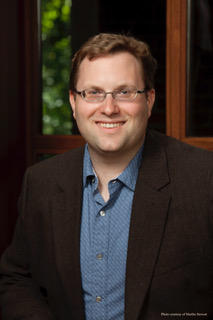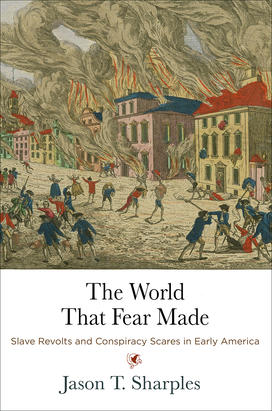Jason T. Sharples *10 Examines Slave Insurrections and Manipulated Racial Fear

The book: When we think of slave revolts, we understand them as the most effective means of rejection of the slave system. In his new book, Jason T. Sharples *10 turns to leaders’ responses and focuses on how colonial regimes politicized the threat of rebellions to unite their followers in a racial discord. In other words, conspiracy scares are not a modern phenomenon.
The World That Fear Made: Slave Revolts and Conspiracy Scares in Early America (University of Pennsylvania Press) engages with archival records and questions colonial interrogators’ motives. Sharples suggests that our conceptions of quashed insurrections rely on confessions extracted from tortured slaves which were manipulated to fit colonial officials’ designs and kindle racial fear.

The author: Jason T. Sharples *10 is an Associate Professor of History at Florida Atlantic University teaching early American history and world civilizations. He offers courses in early American colonial societies, European empires, and indigenous peoples; slavery and the Africa diaspora; and the American Revolution and early United States. Sharples writes on the social and cultural history of early North America and the Caribbean based on his archival research in Europe, the Caribbean, and at major research libraries around the United States. He discovered early American history as a child in Western New York when climbing fortifications and exploring the sites of vanished towns. He still insists on detours to places that, although obscure, were no less important to making us who we are.
Opening lines: An enslaved man named Ben faced a harrowing decision in Bridgetown, Barbados, in October 1692, at the beginning of the largest and most devastating conspiracy scare of the seventeenth century. He had no good options left when four militia officers found him guilty, hung him up in chains, and starved him almost to death to get him to speak about the alleged plot. Ben saved himself and his loved ones by turning king’s evidence and by dubiously confirming for the court that it had discovered a secret plan for coordinated insurrection exactly one day before it would have engulfed the island. The officers expanded the investigation with Ben’s testimony against acquaintances, describing him as “altogether the meanes of the farther discovery” of many new suspects. As a result, two hundred to three hundred enslaved people experienced the trauma of arrest and interrogation by the militia officers, and they faced the real prospect of joining the scores whom the court banished, castrated, hanged, burned alive, or starved to death. At least 114 enslaved people died painfully at the hands of the judges, and others were left terrified and in mourning.
As the militia officers took down Ben’s coerced confession, they transposed that information into a distinctly European projection in a table appended to a report of four manuscript pages. Demonstrating English fears more than African goals, they recorded conspirators as members of militia units in a rebel army in a format that exactly mirrored the colony’s regiments of horse and foot. The table also represented the projected postinsurrectionary world, with the anticipated “disposeall of the Government” positions among rebels and, simultaneously, conspirators’ claims on gentlemen’s very identities. A horizontal line connected each enslaved man’s name to that of the gentleman he intended to supplant. Ben apparently placed himself in the position of “governor” to increase his value to information-hungry investigators and to enhance his power to bargain for his life and redirect arrests away from his loved ones.
The essence of the “discovery” of a slave conspiracy—that is, the fabrication of official knowledge about an alleged plan for insurrection—is best captured in this cross-cultural reframing and intimate but imbalanced negotiation between fearful investigators and a desperate informant. Magistrates were helpless to know anything about the potential rebellion unless they extracted information from an enslaved person whose assistance they compelled through calculated terror. But when they turned English ears to African voices, they heard them imperfectly. They evaluated informants’ ideas and recorded aspects of them that aligned with their own notions of possible forms of insurrection. Questioning led informants down paths laid by European expectations. Accordingly, the court determined on slim evidence that Ben and his accomplices planned to seize masters’ arms in the dead of night, meet at the principal settlement of Bridgetown, set fires around town to lure sleepy men outside into a slaughter, and then supplant them as heads of existing households and government. Even though this scene would look familiar in the eighteenth century, in this seventeenth-century moment it was a new, conjunctural pastiche of English and African ideas
Review: “Thought-provoking, original, and engaging, The World That Fear Made is sweeping in its chronological scope and rich with details and stories that convey the lived experience of his subjects at key moments of crisis. It is a sophisticated and valuable corrective to the literature on slave rebellions.” — Justin Roberts, Dalhousie University











No responses yet